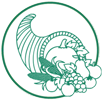This story came to us from Carolyn Russell of the Connecticut Food Bank. Occurring almost a decade after The Overflowing Storeroom, it is a valuable reminder that a great deal of needless waste happens due to confusion caused by the dates on food products, and also that bringing positive change to the charitable food system is often an ongoing and gradual process.
About 2 years ago I went to visit one of our larger, and presumably higher functioning pantry partners, to discuss an opportunity for them to pick up donations from a national high-end grocery store. When I arrived at the pantry, which identified themselves as a client choice pantry, I was surprised to see that almost all the product on their shelves was a house brand for a regional grocery chain. When I inquired about it the pantry director told me that since the food bank generally had very little food to offer, they purchased most of the food they distributed.
Being in procurement, I knew that back at the food bank, we had a large variety of food to offer, so I pressed the pantry director about what she meant by “very little food to offer”. She went on to explain that they had a list of items that they provided and since they could not get a large enough quantity of these items from the food bank to provide to all of their clients, they had to purchase them. She continued on to explain that in addition to not having enough of the “right” items, often the food they got at the food bank was close to or past the best by date, so they usually couldn’t distribute it anyway. She went on to explain that they had similar issues with food drive items, which it seemed she was sure were items that people found in the dark recesses of their cabinet at home and decided to donate rather than discard.
I suggested that they could take some of the random items they received from the food bank or from food drives and put them on a “grab bag” table and let clients take what they needed or wanted, at this point she showed me a small shelf stuck in a corner near their reach in cooler with about two dozen odd items on it, and a sign that said “expired items, consume at your own risk”. Needless to say, not many of the clients that I saw getting food that day took any of these random items.
I started to explain that the majority of foods, especially shelf stable foods, are perfectly safe to consume for some time after the code date, and was quickly cut off and told that they have heard this, and had even received some information from the food bank in the past regarding extensions, but they didn’t believe that the food was really safe and wanted to make sure that their clients knew that they should be wary of consuming anything past the date on the item. I offered to send the information again, and come back at a later date to discuss code dates and what they all mean with their staff and volunteers. My offer was politely declined, so I thanked the director for her time, and for the tour of their facility and went on my way.
It’s amazing that even with the changes in the food banking industry, many of the barriers to getting food to people are still largely the same as they were two decades ago.
 End Hunger in America
End Hunger in America